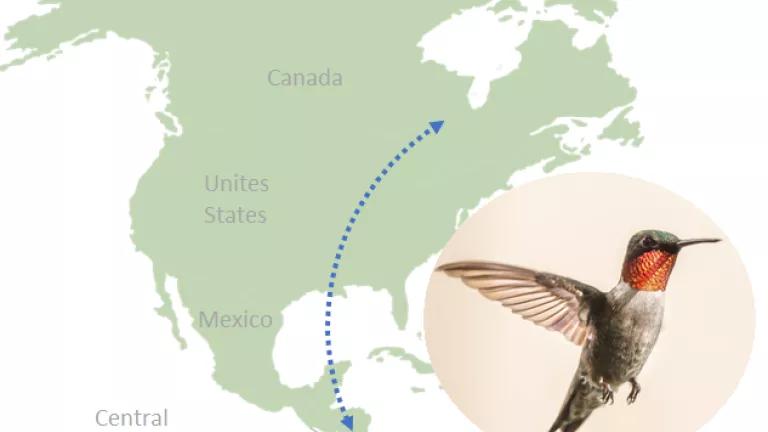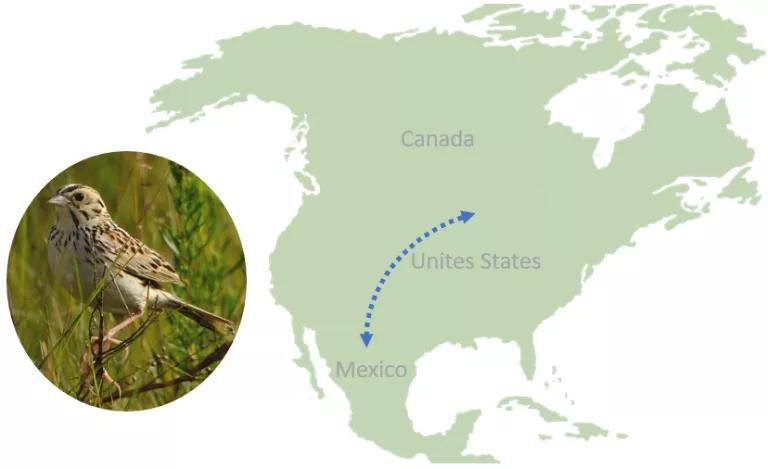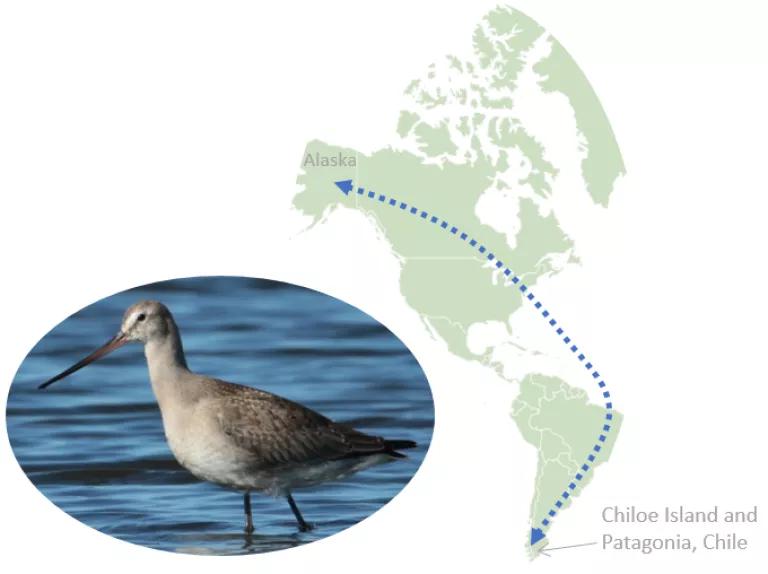Let’s Celebrate World Migratory Bird Day in Latin America

This blog was authored by Andrés Anchondo. He works with NRDC’s Latin America Project researching on conservation finance to conserve Latin America’s natural resources.
Birds are amazing creatures that travel hundreds, if not thousands, of miles/kilometers (km) every year. Migration is without a doubt an amazing phenomenon that connects landscapes and backyards in North America with bird habitats in Latin America—the region with the largest diversity of bird species in the world. Through numerous actions such as planting native species or supporting conservation laws, we can make migration safer for birds.
Every second weekend of May and October is World Migratory Bird Day. It is a day to celebrate the grandeur of birds and their journey feats. And where better to celebrate than Latin America. Colombia, Peru, Brazil, and Ecuador are among the top five countries with the highest number of bird species (Indonesia is also in the top five). Colombia, with more than 1,900 species (the world’s #1 in avian diversity), is home to one of every five bird species that exist in the world. To have a better perspective of this number, Canada, the continental United States, and Mexico together have a little over 1,150 species.
Migration Is Amazing!
Imagine you have a 600-mile (950 km) trip next month. You pack your luggage and board a plane, right? Not so quickly. You can only walk, and you are not allowed to bring luggage or ask anyone for help. And there is an important detail—you must travel at night, you cannot stop, or you die!
While probably not the most accurate comparison, it gives us an idea of the epic annual migration of the ruby-throated hummingbird. This tiny bird that weighs as much as a dime (roughly 2.2 grams), starts its journey in eastern Canada and the United States, and, most impressively, crosses the Gulf of Mexico (that’s ~600 miles/~950 km!) to reach its wintering grounds in southern Mexico and Central America. Given how energetically demanding this journey is, beforehand the hummingbird doubles its body weight in fat in order to have enough energy for the trip. After a ~20-hour solo flight from one side of the Gulf of Mexico to the other, the ruby-throated hummingbird loses half of its body weight. But the ruby-throated hummingbird isn’t the only one to endure this type of journey. Many bird species migrate like this twice a year. Isn’t this a huge reason to celebrate?

Almost half of the bird species in the world migrate. They migrate during spring and fall to places where they can find warmer temperatures, enough food, and habitat to breed. They do it over either short or long distances. For example, the Baird’s sparrow is among the 29 North America grassland bird species that migrate to the grasslands in the Chihuahuan desert in Mexico, just south of the border with the United States. This is a relatively short distance, compared to the trip made by the Hudsonian godwit, which flies all the way from Alaska’s arctic tundra to Chiloe Island and the Patagonian region of Chile (~8,700 miles/~14,000 km).

How Dangerous Is Migration?
Birds are smart creatures that have developed strategies to improve their chances of surviving these arduous journeys. For example, birds will not migrate together in one large group, not even if they are the same species, in order to ensure that they don’t all, for example, get wiped out by the same hurricane. That is why migration season lasts several months, and many bird species migrate alone or in small groups.
Many bird species migrate during the night, especially small species such as warblers. In doing so, they can avoid most predators, which do not hunt at night.
If migration by itself weren't strenuous enough, human activity is making migration even harder and riskier. Birds are easily attracted to light, and what we think of as a well-lit building or street is a grave threat to migratory birds. As a result, many birds perish by hitting buildings at night. In addition, when the birds finally make it to their wintering or breeding sites, they often face many other threats including habitat loss, feral cats, illegal hunting, and change in temperature and rainfall.
Let’s Make Migration Safe Again
It falls upon every one of use to make it easier for migratory bird species to reach their breeding and wintering grounds across the Americas. Activities as simple as growing native plant and tree species in our yards, or asking our office building managers to turn off the lights at night can help migratory birds on the go. For those of us who want to go above and beyond that, we can support call to actions, projects, and groups that work to protect or restore birds’ habitats or even oppose projects that damage these intrepid migrators’ habitats. NRDC’s Latin America Project has been engaged, and will continue to work to protect the habitat of migratory species in key areas like the Baja California peninsula of Mexico and the rugged forests of Chilean Patagonia because we know how much they need our care and support.
Support NRDC’s efforts to Protect America’s Migratory Birds.
*Map is an approximate visual representation of the migration route. It does not mark the exact route followed by the bird species.

